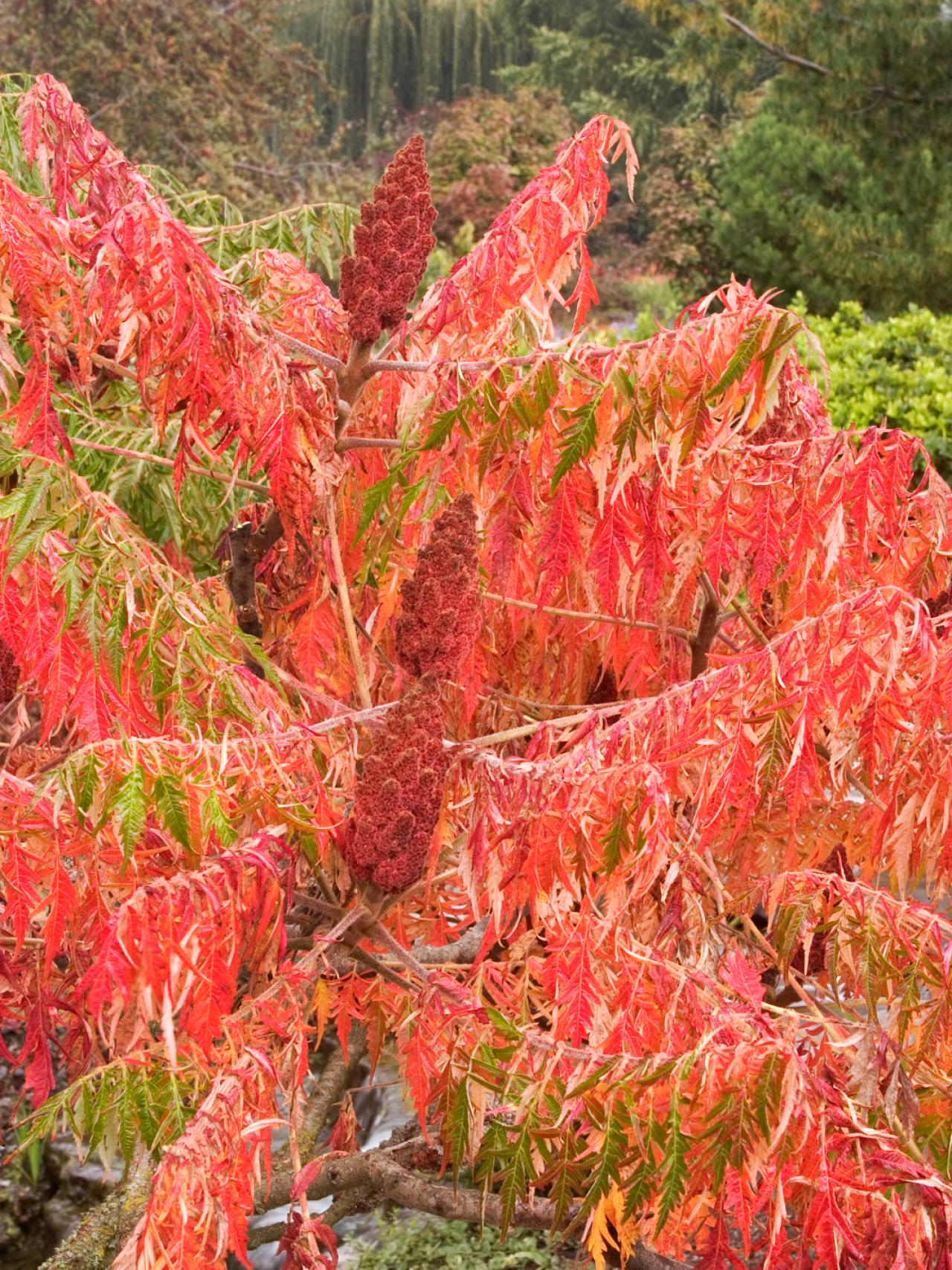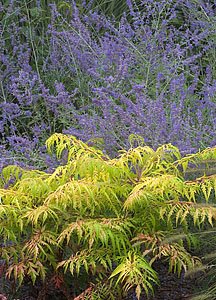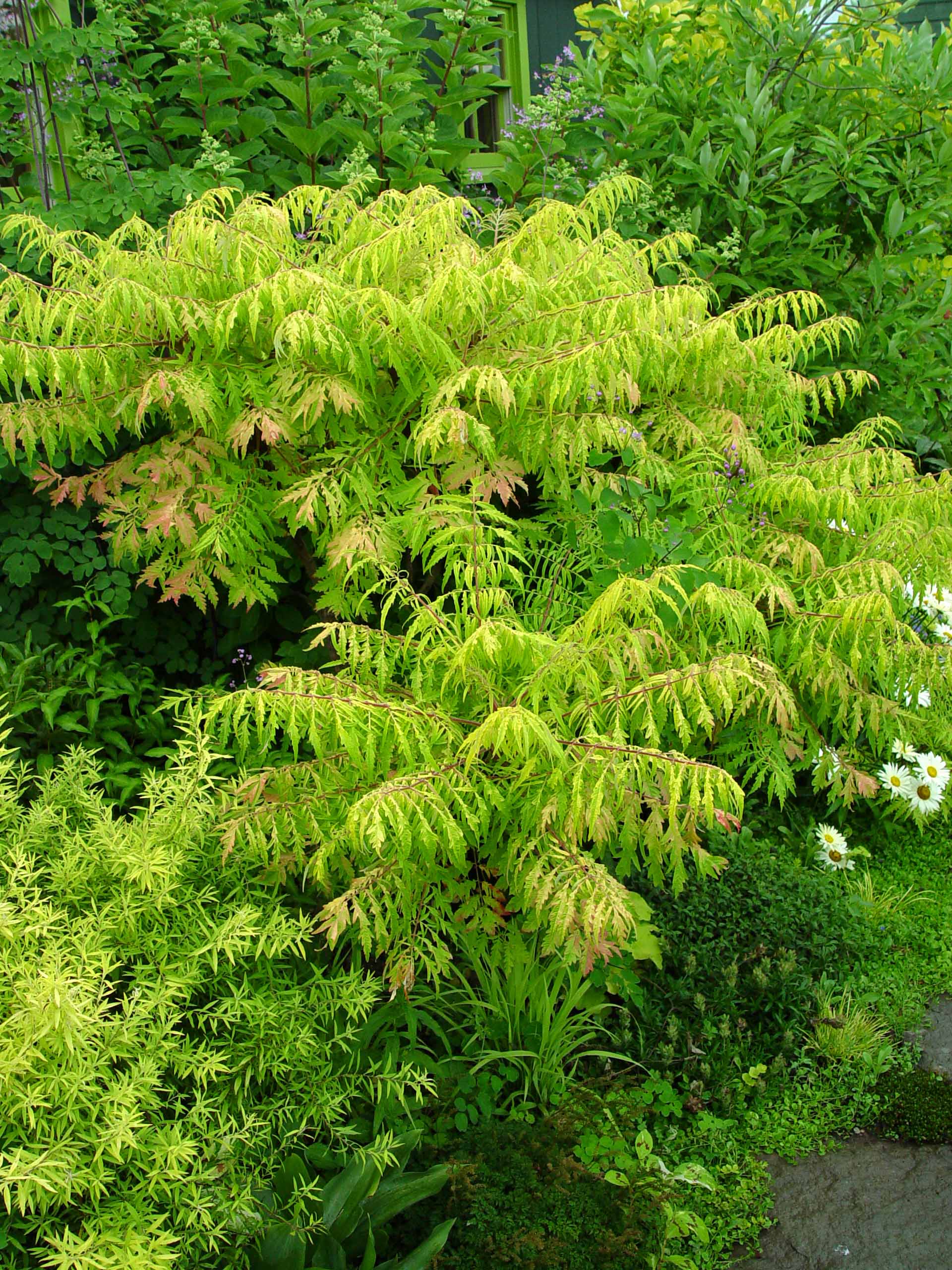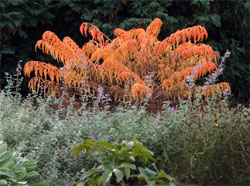is tiger eyes sumac poisonous
Shining Sumac has wings on the rachis and is so shiny it looks like the leaves have been waxed. Department of Agriculture plant hardiness zones 4 through 8 just may take the cake.

Sumac Trees Are Unsung Garden Trees Hgtv
Does Tiger Eye sumac spread.

. It is smaller than staghorn sumac reaching 6 ft tall and wide. Some people are more sensitive to the plants and will have harsher symptoms. The foliage is a bright yellow-chartreuse turning orange and scarlet in the autumn.
Tiger Eyes cutleaf staghorn sumac is a cultivar of staghorn sumac R. When it comes to sumac plants in the landscape Tiger Eyes sumac Rhus typhina Bailtiger hardy in US. Rhus typhina Tiger Eyes Bailtiger Tiger Eyes Sumac.
What part of sumac is poisonous. Are sumac trees poisonous to dogs. You will not find poison sumac growing up on high dry hillsides where non-poisonous ornamental kinds typically grow.
Rhus typhina Tiger Eyes is a particularly attractive form of stags horn sumach. All parts of a poison sumac plant are poisonous and the oils remain active even after the plant dies. TIGER EYES is a dwarf golden-leaved staghorn sumac cultivar that typically matures to only 6 tall and as wide.
This deciduous shrub is treasured for its. While the Sweet Sumac is native to southern California it can also be found in Arizona and Baja. This plant can spread quickly and can be a problem for the environment.
It has stunning bright gold summer. Care for Tiger-Eye Sumac Shrubs. The Tiger Eyes staghorn sumac R.
The Sweet Sumac grows from seven to 30 feet tall and is hardy in zones 7 to 11. It can form large colonies by root suckers but less so than other sumacs. It is a very showy shrub with striking orange and scarlet fall color.
TIGER EYES will slowly spread by suckering but is not aggressive as is the case with species plants. Yes there is poison sumac Toxicodendron vernix which will definitely cause a rash that is worse than poison ivy poison sumac is found only in swamps. Department of Agriculture plant hardiness zones 4.
The Tiger Eyes Sumac is an excellent and superior landscape shrub because of its unique yellow leaves and dwarf size. Symptoms of a poison sumac rash appear 848 hours after exposure and can last for weeks. Does Tiger Eyes sumac spread.
This low-growing variety has plump pink berries and is drought-tolerant. The foliage is eye-catching in the spring summer and fall. The finely divided foliage is bright golden yellow turning orange and red before falling in autumn.
Tiger Eyes Staghorn Sumac shrubs have chartreuse leaflets changing to yellow contrasting with pink stems. Smooth Sumac has none of the hair on the leaves. A dwarf variety its said to be less invasive than the species.
Can you propagate sumac trees. Rhus typhina Tiger Eyes looks particularly good when used as a focal point in the. It was discovered in a cultivated nursery setting in July of 1985 as a whole plant mutation of R.
Can sumac be trimmed. Tiger Eyes Sumac Far Less Aggressive What Grows There Hugh Conlon Horticulturalist Professor Lecturer And Gardener Tiger Eyes Cutleaf Staghorn Sumac Johnson S Gardens Cedarburg Wi Sumac And Its Uses Berries Forum At Permies. If its colorful foliage and elegant form dont do enough to.
One cultivar of Staghorn Sumac that has become very popular in recent years is Rhus typhina Baitiger PP16185 - First Editions Tiger Eyes Cutleaf Sumac. The non-poisonous variant the Tiger Eye Sumac resembles the lacy Japanese maple tree. When should I take Abutilon cuttings.
Typhina Bailtiger Tiger Eyes cultivar provides year-round color in US. Is tiger eyes sumac poisonous Sunday July 24 2022 Edit. Several Great Choices The most popular sumacs for landscape use are winged staghorn and smooth sumac either the native wild species or specially-bred cultivated varieties such as the golden leaf Tiger Eye sumac.
Patent PP16185 Easy to grow Large foliage fronds emerge early spring Foliage starts chartreuse and matures to bright non-burning yellow Fall foliage is a brilliant scarlet Non-poisonous plant Pinkish colored stems. The species is native to the US and Canada. Another native plant that people love to hate is the staghorn sumac Rhus typhina.
Are Tiger Eye sumac invasive.

Tiger Eyes Cutleaf Staghorn Sumac First Editions

Tiger Eyes Staghorn Sumac Rhus Typhina Wisconsin Horticulture

Fiddling Around In The Fall Garden

Plant Profile Tiger Eyes Sumac

Tiger Eyes Cutleaf Staghorn Sumac Johnson S Gardens Cedarburg Wi

Country Gardener Gold Medal Plant Tiger Eyes Sumac

A Sumac For All Seasons Knecht S Nurseries Landscaping

Sumac Tiger Eyes Garden Housecalls

Tiger Eyes Staghorn Sumac Rhus Typhina Wisconsin Horticulture

Tiger Eye Sumac Rhus Typhina Bonsai Soil Leaf Coloring Leaf Structure

Tiger Eyes Cutleaf Staghorn Sumac Johnson S Gardens Cedarburg Wi

Tiger Eyes Cutleaf Staghorn Sumac Johnson S Gardens Cedarburg Wi

Tiger Eyes Cutleaf Staghorn Sumac Johnson S Gardens Cedarburg Wi

Poison Sumac Identification Walter Reeves The Georgia Gardener
Tiger Eyes Sumac Far Less Aggressive What Grows There Hugh Conlon Horticulturalist Professor Lecturer And Gardener

Sumac And Its Uses Berries Forum At Permies

Click To View Full Size Photo Of Tiger Eyes Sumac Rhus Typhina Bailtiger At Oakland Nurseries Inc Trees And Shrubs Shrubs Yellow Shrubs
